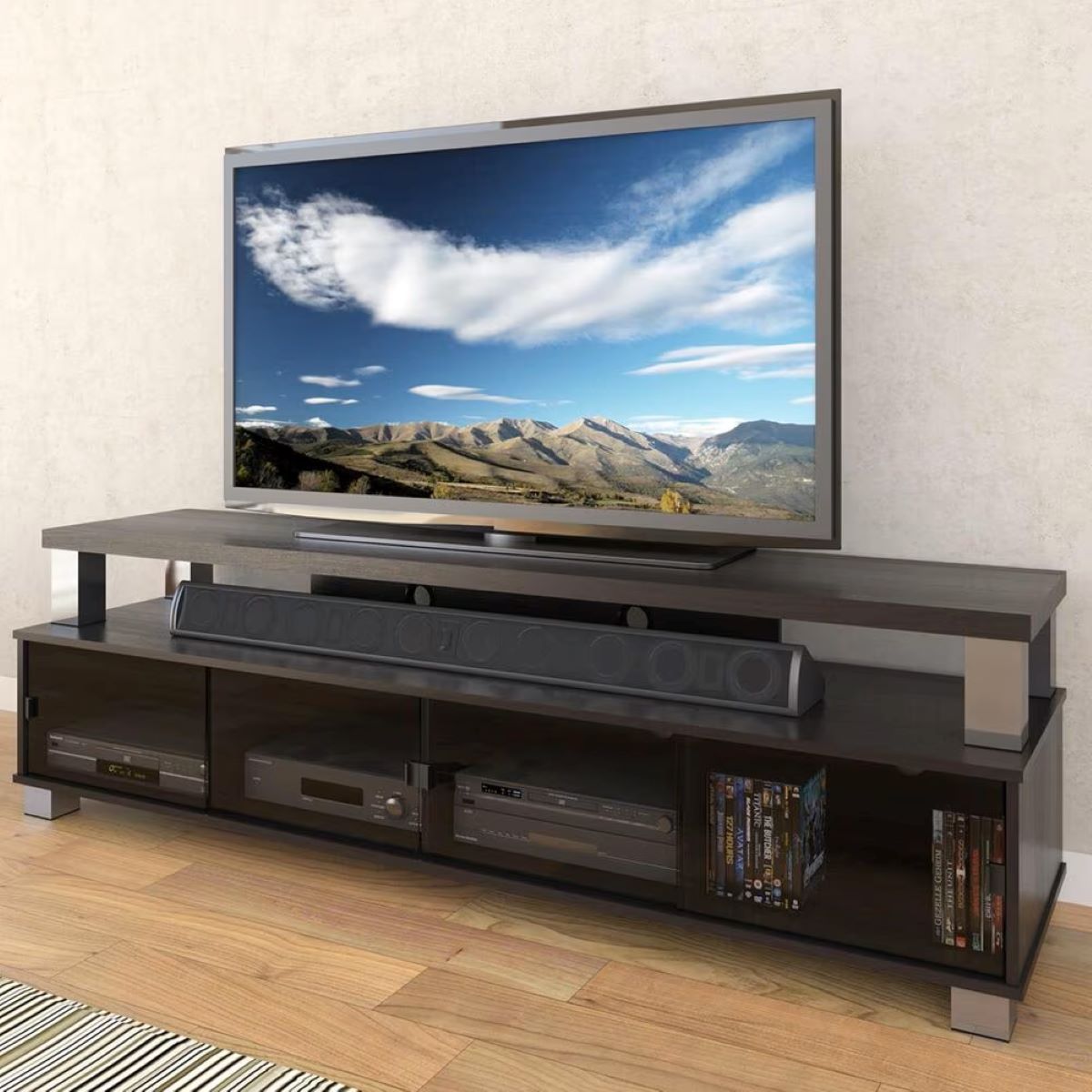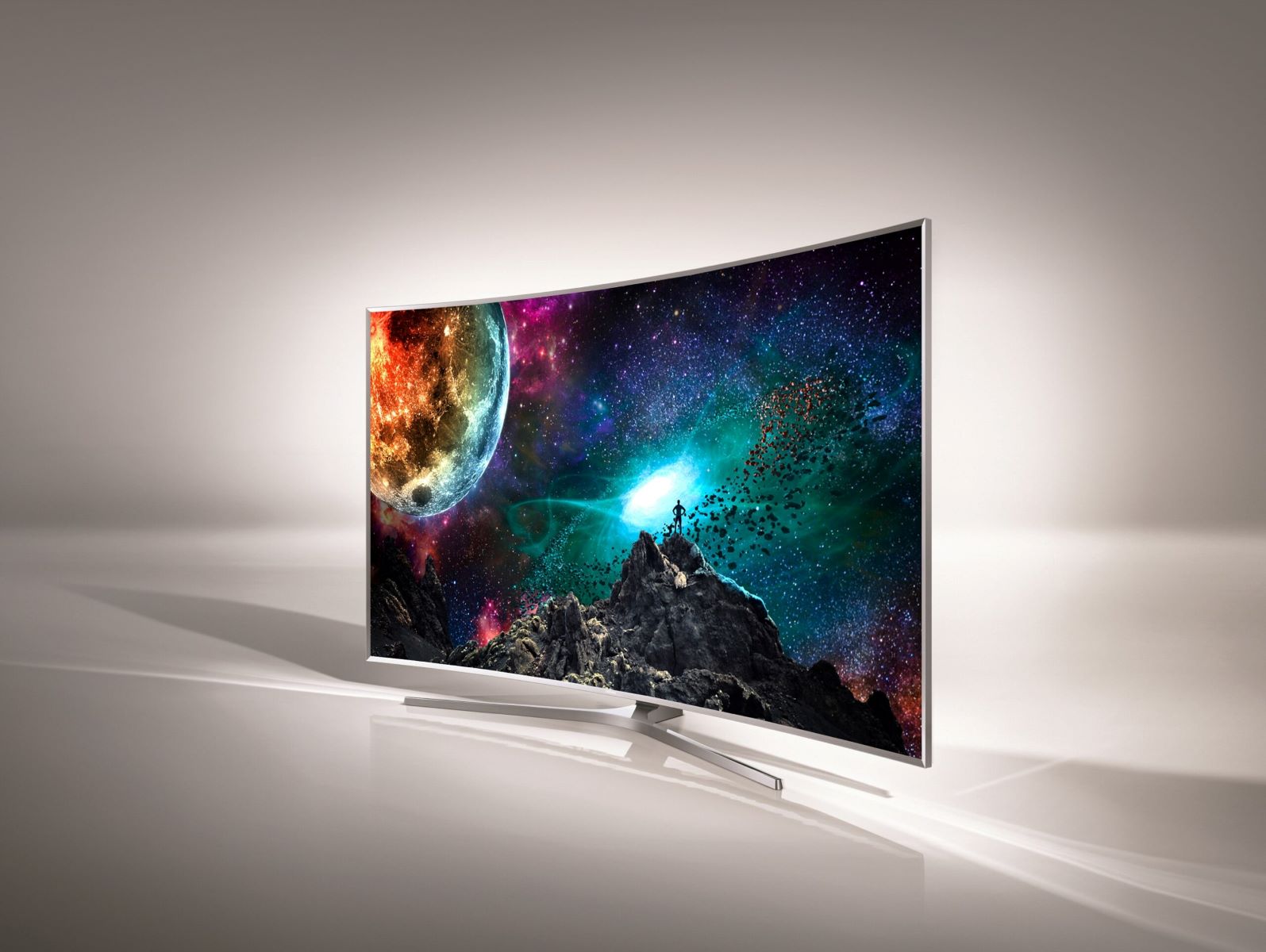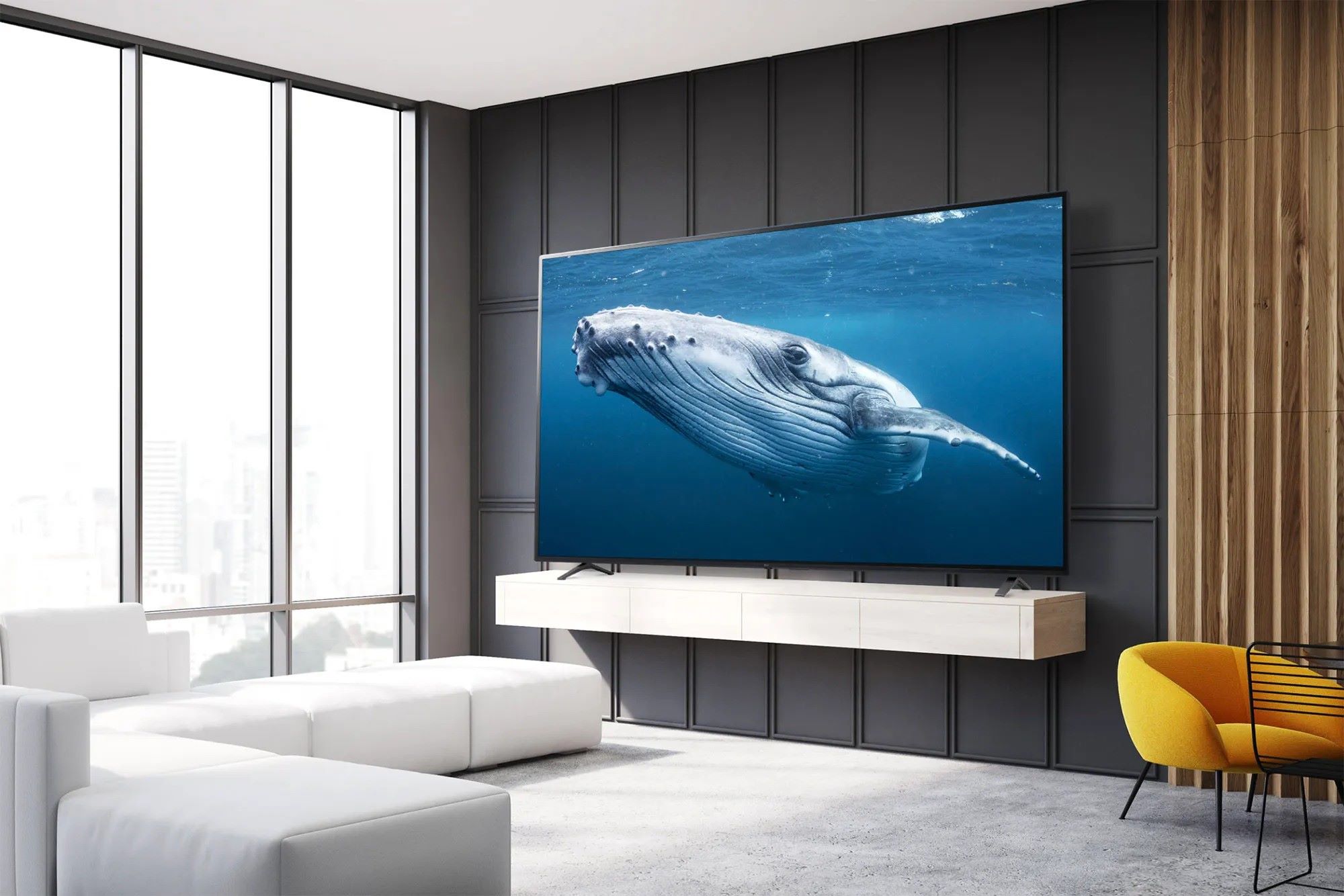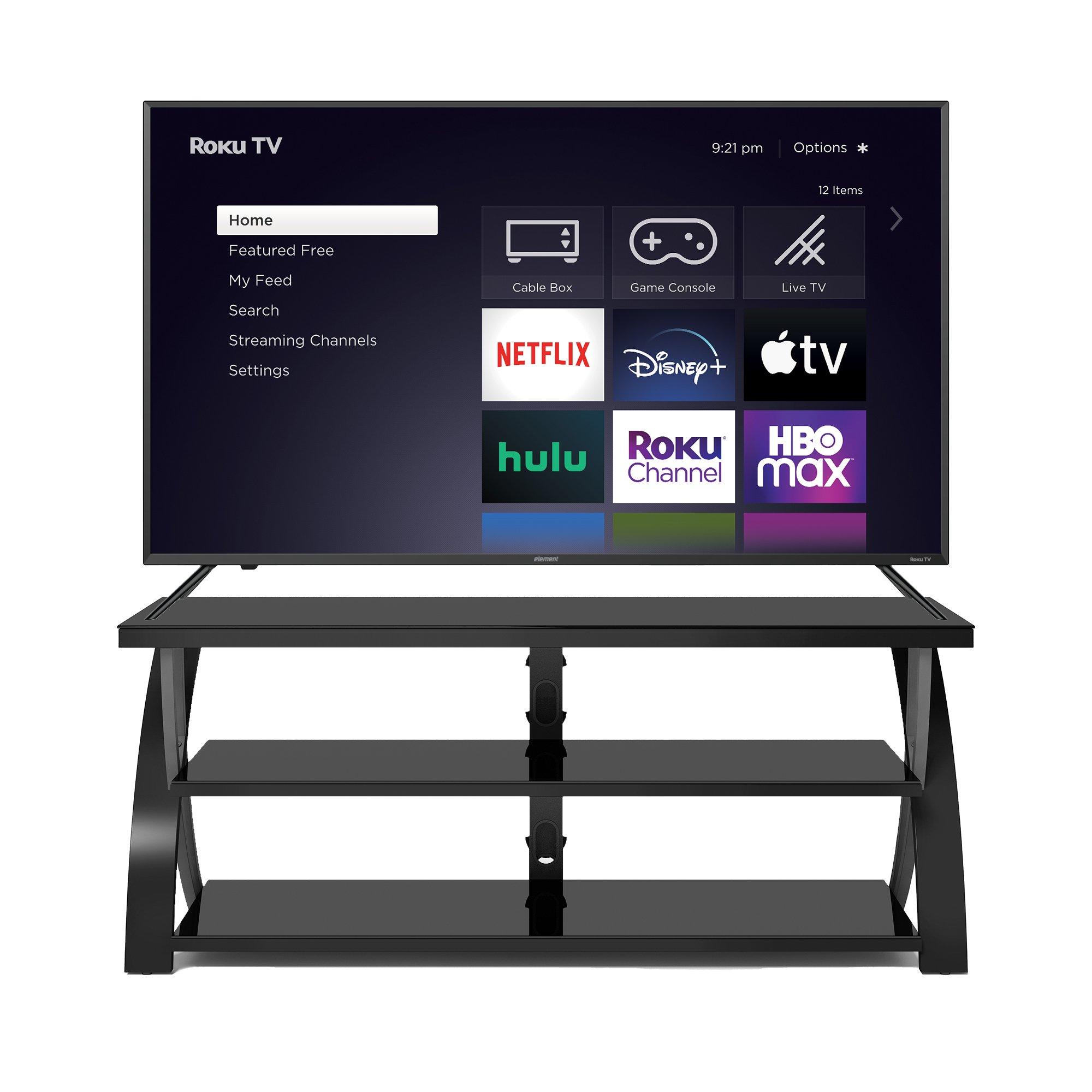Home>Furniture>Living Room Furniture>What Does TV Stand For In Television


Living Room Furniture
What Does TV Stand For In Television
Modified: March 16, 2024
Discover the meaning of TV and its significance in the world of television. Browse our selection of living room furniture to find the perfect TV stand for your home.
(Many of the links in this article redirect to a specific reviewed product. Your purchase of these products through affiliate links helps to generate commission for Storables.com, at no extra cost. Learn more)
Introduction
Television, or TV for short, is a ubiquitous form of entertainment and information that has become an integral part of our daily lives. Whether it’s tuning in to watch our favorite shows, staying updated with the latest news, or enjoying a movie marathon, television has the power to captivate and connect us to the world beyond our living rooms.
In this article, we will explore the definition of TV and delve into its origins, technology, and evolution. We will also examine the impact of TV on society and its relevance in the digital age. So, grab your remote control, get comfortable on your living room furniture, and let’s dive into the fascinating world of television.
Key Takeaways:
- TV, or television, is a powerful medium that entertains, informs, and connects us. From its origins to the digital age, TV has evolved, shaping our culture and offering diverse programming for everyone’s enjoyment.
- The digital age has transformed TV, giving viewers more control and access to personalized content. With streaming services, multi-screen viewing, and interactive experiences, the future of television holds exciting possibilities for immersive entertainment.
Read more: What Does Television Stand For
Definition of TV
TV, which stands for television, refers to the electronic system of transmitting and receiving visual and audio signals for the purpose of broadcasting moving images and sound to a wide audience. It is a medium that allows viewers to engage with various forms of content, including news, sports, documentaries, dramas, sitcoms, reality shows, and more.
Television sets, commonly known as TVs, are devices equipped with a screen and speakers that receive and display these broadcasted signals. These sets come in different sizes, resolutions, and technologies, such as LCD, LED, OLED, and QLED, each offering unique viewing experiences.
TV broadcasts can be received through various methods. Traditional terrestrial broadcasting involves transmitting signals over the airwaves, which are received by antennas on the TVs. Cable TV involves transmitting signals through coaxial cables connected to the TV sets. Satellite TV, on the other hand, relies on signals being beamed from satellites and received by satellite dishes.
With advancements in technology, the definition of TV has expanded to include online streaming services. Over-the-top (OTT) platforms, such as Netflix, Amazon Prime Video, and Hulu, deliver TV shows and movies directly to viewers through the internet. Smart TVs, equipped with internet connectivity, enable users to access these streaming services without the need for an additional device.
The Origins of Television
The concept of television can be traced back to the 19th century when inventors and scientists began experimenting with transmitting images and sound. One of the key pioneers in this field was Scottish engineer Alexander Graham Bell, who conceptualized the idea of transmitting images over a wire in the late 1800s.
However, it was the work of inventors like John Logie Baird and Philo Farnsworth in the early 20th century that laid the foundation for modern television. Baird is credited with building the first working mechanical television system, while Farnsworth developed the first fully electronic television system.
The first public demonstration of television took place in 1925 when John Logie Baird showcased his mechanical television system, which transmitted images of faces. In the following years, improvements were made to the technology, leading to the first television broadcasts and the establishment of regular programming.
Television quickly gained popularity and became a household staple, providing a means of entertainment and information during the difficult times of the Great Depression and World War II. By the 1950s, television sets were a common sight in living rooms across the United States and Europe.
Throughout the decades, advancements in technology continued to shape television. The transition from black and white to color broadcasting in the 1960s brought a new level of immersion and visual appeal to TV shows and movies.
Additionally, the introduction of cable television in the 1970s expanded the number of available channels and allowed viewers to access a wider range of content. This marked a significant shift in how television was consumed and opened up new possibilities for niche programming.
In the late 20th century, the rise of digital television brought further improvements in picture and sound quality. Digital signals allowed for clearer reception and enabled the transmission of high-definition (HD) content, enhancing the viewing experience of viewers.
Today, television continues to evolve with the advent of Ultra-High Definition (UHD) and 4K resolutions, which offer even more detailed and lifelike images. Furthermore, the integration of smart technology and internet connectivity has transformed TVs into multimedia hubs, allowing users to access a wide range of online content and streaming services.
TV Technology and Evolution
The evolution of television technology has been a remarkable journey, marked by numerous advancements and innovations. From the early mechanical television systems to the digital and smart TVs of today, TV technology has constantly improved to deliver enhanced visual and audio experiences.
One of the significant milestones in TV technology was the transition from mechanical to electronic television systems in the 1920s and 1930s. This shift allowed for the development of cathode ray tube (CRT) TVs, which used electron beams to create images on a phosphorescent screen. CRT technology remained dominant for several decades and shaped the television viewing experience during that time.
In the late 20th century, the advent of flat-screen technology revolutionized the TV industry. Liquid crystal display (LCD), light-emitting diode (LED), organic light-emitting diode (OLED), and quantum dot LED (QLED) are some of the key technologies that emerged during this period.
LCD TVs gained popularity in the early 2000s due to their slim design and energy efficiency. These TVs use a backlight to illuminate the liquid crystal display panel, which controls the amount of light passing through to create images.
LED TVs, on the other hand, employ light-emitting diodes as the backlight source. This technology offers better contrast, improved color accuracy, and enhanced energy efficiency compared to traditional LCD TVs.
OLED TVs take television display quality to a whole new level. Each pixel on an OLED screen emits its own light, resulting in deep blacks, vibrant colors, and exceptional contrast. This technology provides a more immersive and visually stunning viewing experience.
QLED TVs, a more recent development, combine quantum dots with LED backlighting to enhance color accuracy and brightness. This technology offers a wider color gamut and better HDR (High Dynamic Range) performance, delivering more realistic and lifelike visuals.
In addition to display technologies, the audio capabilities of TVs have also improved over time. Early TVs had limited audio output, but with the advent of stereo sound and surround sound systems, viewers can now enjoy a more immersive audio experience. Soundbars and home theater systems complement modern TVs, further enhancing the audio quality.
The future of TV technology looks promising as manufacturers continue to push boundaries. Key developments on the horizon include rollable and transparent displays, as well as advancements in screen resolution and refresh rates.
As TVs become smarter and more integrated with the internet, features like voice control, personalized recommendations, and smart home integration are becoming commonplace. Smart TVs allow viewers to access online streaming services, browse the web, and interact with apps, transforming them into multimedia centers in our living rooms.
The evolution of TV technology has truly transformed the way we consume media, providing us with immersive and engaging experiences that have become an integral part of our daily lives.
TV stands for “television,” which is a combination of the words “tele” (meaning distant) and “vision” (meaning sight). It refers to the technology that allows us to receive moving images and sound from a distance.
TV as a Medium for Entertainment
Television has long been a primary source of entertainment for people around the world. From captivating dramas and hilarious sitcoms to thrilling sports events and thought-provoking documentaries, TV offers a diverse range of programming that caters to various interests and preferences.
One of the main appeals of television as an entertainment medium is its ability to transport viewers to different worlds and immerse them in captivating narratives. TV shows and series have the power to capture our attention and keep us hooked for multiple episodes or even entire seasons. From epic fantasy sagas to gripping crime dramas, these serialized stories create a sense of anticipation and make viewers eagerly await the next installment.
Moreover, television allows us to explore diverse genres and discover new interests. Whether it’s exploring the depths of space in a science fiction series, following the lives of our favorite characters in a soap opera, or delving into the complexities of human nature in a psychological thriller, TV has something for everyone.
Reality TV shows have also gained immense popularity over the years. These programs provide viewers with a glimpse into the lives of real people, allowing us to experience their triumphs, challenges, and personal journeys. From talent competitions to cooking shows and home renovation series, reality TV offers a unique form of entertainment that combines drama, competition, and unscripted moments.
Sports broadcasts are another major aspect of television entertainment. Whether it’s football, basketball, cricket, or any other sport, TV allows us to witness and experience live sporting events from the comfort of our own homes. We can cheer for our favorite teams, appreciate the skill of athletes, and engage in the excitement and thrill of the game.
In addition to traditional TV programming, streaming services have revolutionized the entertainment landscape. Platforms like Netflix, Amazon Prime Video, and Hulu offer a vast library of movies, TV shows, and original content that can be accessed anytime and anywhere. This on-demand model allows viewers to binge-watch their favorite shows, discover new gems, and have full control over their viewing experience.
Television has also played a significant role in fostering cultural conversations and shaping popular culture. Iconic shows like “Friends,” “Game of Thrones,” and “Breaking Bad” have become cultural phenomena, igniting discussions, spawning memes, and leaving a lasting impact on society.
Through television, we not only find entertainment but also connect with others. Whether it’s discussing the latest episode with friends, engaging in online fan communities, or even participating in live TV event screenings, television serves as a social glue, bringing people together over shared interests and experiences.
Television continues to evolve and adapt to changing viewer preferences. With advancements in technology and the rise of streaming services, the future of TV as a medium for entertainment is even more promising, offering more diverse content and personalized viewing experiences.
Read more: What Does TCL TV Stand For
Impact of TV on Society
Television has had a profound impact on society, shaping our culture, influencing our behavior, and transforming the way we consume information and entertainment. Here are some key ways in which TV has left its mark on society:
1. Informing and Educating: TV serves as a powerful medium for disseminating news, educational content, and documentaries. It keeps us informed about local and global events, providing a platform for journalists and reporters to share stories and information. Educational TV programs, such as nature documentaries and science shows, educate viewers and inspire curiosity about the world we live in.
2. Shaping Public Opinion: Television has the ability to shape public opinion on various social, political, and cultural issues. News programs, talk shows, and documentaries have the potential to influence public discourse and raise awareness about important topics. TV can have both positive and negative effects, as it can sway public opinion and shape societal perceptions.
3. Entertainment and Escapism: TV offers a means of escape from the stresses of daily life. It provides a form of entertainment, allowing us to relax, unwind, and enjoy quality time with family and friends. The availability of a wide range of genres and content provides options for everyone, catering to different interests and moods.
4. Advertising and Consumerism: Television plays a significant role in advertising products and services. Commercial breaks during TV shows and events are an opportunity for companies to reach a broad audience and promote their offerings. TV advertisements have the power to influence consumer behavior and shape buying habits, leading to a consumer-driven society.
5. Cultural Influences: Television has the ability to shape and reflect cultural norms and values. Through TV shows, movies, and music, it shapes popular trends, fashion, and even language. Iconic TV characters and catchphrases become part of societal lexicon, influencing our behavior and shaping our identities.
6. Social Bonding: Television has the power to bring people together. It creates shared experiences as families and friends gather to watch their favorite shows or sporting events. TV shows and characters become conversation topics, fostering social bonding and creating common ground for interactions.
7. Social Issues and Awareness: Television has been instrumental in creating awareness and raising social issues. Through documentaries, talk shows, and dramas, it brings attention to important topics such as environmental conservation, social justice, and mental health. TV has the power to initiate and support social change movements.
8. Influencing Behavior and Lifestyle: Television can influence viewer behavior and lifestyle choices. It can shape fashion trends, influence dietary preferences, and impact consumer habits. TV characters and celebrities can serve as role models, influencing choices in relationships, career paths, and personal goals.
Overall, television has a multi-faceted impact on society, ranging from informing and entertaining to shaping cultural values and influencing behavior. The evolution of TV in the digital age presents new opportunities and challenges, as individuals have more control over what they watch and when they watch it. As television continues to evolve, its impact on society will continue to be significant.
TV in the Digital Age
The advent of the digital age has brought about significant changes in the way we consume television content. The convergence of television and the internet has revolutionized the medium, providing new opportunities for viewers and content creators alike.
1. Streaming Services: The rise of streaming services has transformed the TV landscape. Platforms like Netflix, Amazon Prime Video, and Hulu offer a vast library of TV shows, movies, and original content that can be accessed on-demand. Viewers have greater control over what they watch, when they watch it, and on which devices, breaking free from traditional broadcast schedules.
2. Over-the-Top (OTT) Platforms: Over-the-top platforms have become increasingly popular, allowing viewers to access TV content directly through the internet, bypassing traditional cable or satellite providers. This has led to the emergence of cord-cutting, where viewers opt for streaming services as their primary source of entertainment, leading to a shift in the TV industry’s business models.
3. Personalized Recommendations: With the vast amount of content available online, personalized recommendation algorithms have become integral in helping viewers discover new shows. These algorithms analyze user preferences and viewing history to suggest relevant content, enhancing the personalized TV experience.
4. Multi-Screen Viewing: The digital age has enabled viewers to watch TV content on multiple devices, such as smartphones, tablets, and laptops. This flexibility allows viewers to consume their favorite shows and movies on the go, transforming any location into a potential TV viewing space.
5. Social Media Interaction: Social media has become an integral part of the TV-watching experience. Viewers can engage in real-time discussions and share their thoughts, reactions, and predictions about TV shows and events on platforms like Twitter, Facebook, and Instagram. Social media has created a sense of community and interactivity around TV content.
6. Original Content and Creative Freedom: The digital age has provided content creators with new platforms to produce and distribute their work. Streaming services have become major players in producing original TV shows and movies, offering creative freedom and diverse storytelling opportunities. This has led to a surge in high-quality, critically acclaimed content that may not have been feasible under traditional broadcast models.
7. Interactive and Immersive Experiences: Advancements in technology have allowed for interactive and immersive TV experiences. Virtual reality (VR) and augmented reality (AR) are being explored to create more engaging and interactive storytelling experiences, blurring the line between the virtual world and reality.
8. Adapting Advertising Models: The digital age has prompted changes in advertising models. Traditional TV commercials are now accompanied by targeted online advertisements and product placements within streaming content. Advertisers have the opportunity to reach specific audiences and measure the effectiveness of their campaigns more accurately.
In the digital age, television has become more accessible, customized, and interactive. Viewers have greater control over their viewing preferences, and content creators have more opportunities to push creative boundaries. As technology continues to evolve, the future of TV in the digital age holds immense potential for further innovation, captivating viewers, and redefining the television landscape.
Conclusion
Television has undoubtedly become a central and influential part of our lives. From its humble beginnings as a mechanical transmission system to the digital age of streaming services and interactive experiences, television has continuously evolved and shaped the way we consume entertainment and information.
We have explored the definition of TV and its origins, delved into the technological advancements that have revolutionized the medium, and examined its impact on society. Television has transformed the way we communicate, think, and engage with the world around us.
Television serves as a powerful medium for entertainment, offering a wide range of genres and programming that caters to diverse tastes and interests. It brings people together, sparks conversations, and provides an escape from the daily grind. Whether it’s getting lost in a captivating drama, cheering for our favorite sports team, or discovering new worlds through documentaries, television has the ability to captivate and engage us.
Furthermore, television has made an indelible impact on society. It has influenced cultural norms, shaped public opinion, and played a significant role in raising awareness about social issues. It has also opened new avenues for content creators, providing platforms for diverse voices and unique storytelling.
The digital age has further transformed television, with the emergence of streaming services, personalized recommendations, and multi-screen viewing. These advancements have given viewers greater control over their TV-watching experience, allowing them to watch what they want, when they want, and on the device of their choosing.
As we move forward, the future of television holds exciting possibilities. Technology will continue to shape the medium, providing enhanced visual and audio experiences. We can expect more interactivity, immersive storytelling, and personalized content recommendations.
In conclusion, television remains a powerful and ever-evolving medium that continues to captivate and connect us. Whether it’s gathering around the TV with family and friends, enjoying a marathon of our favorite shows, or exploring new content through streaming platforms, television has a significant impact on our lives and will continue to be a driving force in the world of entertainment and information.
Frequently Asked Questions about What Does TV Stand For In Television
Was this page helpful?
At Storables.com, we guarantee accurate and reliable information. Our content, validated by Expert Board Contributors, is crafted following stringent Editorial Policies. We're committed to providing you with well-researched, expert-backed insights for all your informational needs.















0 thoughts on “What Does TV Stand For In Television”